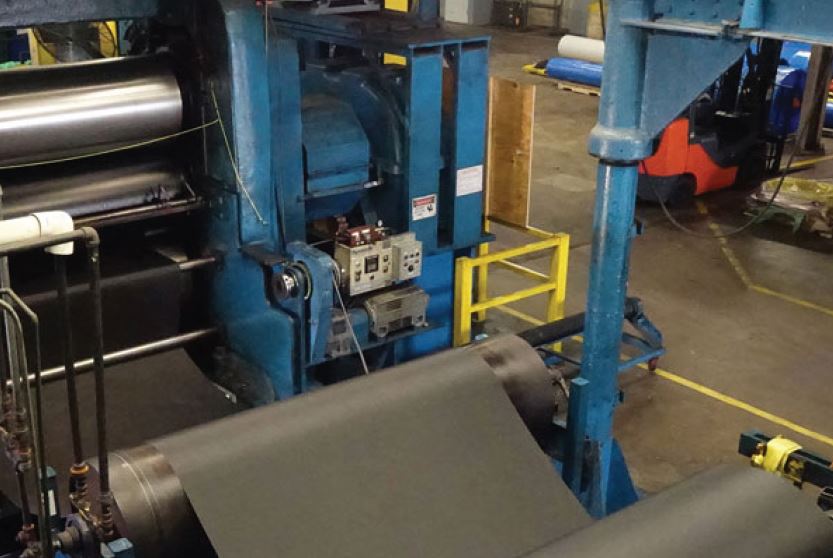Better Quality, Improved Safety, and Lower Costs for Tire Manufacturers
Tire manufacturers require precise control of and often struggle to measure and manage the costly calendering process. In calendering, steel or fabric is placed between two heavy rollers along with rubber, sandwiching the material being coated. As the material moves through the rollers, the pressure forces the rubber onto the steel or fabric, adhering the two. In order to manage cost and efficiency, manufacturers must create a baseline for process improvement, including flattening the sheet to allow for reduction in gauge or thickness targets and controlling the top- and bottom-material measurements (balance).
Delivering significant savings
Just a minor reduction in tire sheet gauge thickness can result in substantial savings: in a typical plant, reducing the gauge by as little as 0.01mm can reduce material cost more than $500,000/year.
Optimization of the sheet profile allows minimization of the sheet thickness while still meeting product quality requirements. In a typical plant, an optimized sheet might allow as much as a 0.025 reduction in gauge, resulting in more than $1.2M/year in savings, as well as reduced scrap and increased product quality.
Luna Innovations and Bridgestone Tire are working together to drive better product quality and reduced material costs for tire manufacturers by using Luna’s innovative Terahertz technologies to provide safe, fast accurate thickness measurements and simultaneously compensate for changes in composition of ply construction.
To help achieve this, Luna and Bridgestone are increasing the sampling frequency of the measurements, using Luna’s single-sided T-Gauge terahertz sensor, since the Luna system can take 100 measurements per second. At the Bridgestone facility, the total scan time is less than 20 seconds, so Bridgestone can take around 3,600 measurements in back-forth scans at 4 inches / sec, providing nearly 300,000 THz measurements over 1000m.
By controlling the calender with Luna's THz gauge, tire manufacturers can reduce the variation in thickness of all layers, and let them run closer to the minimum thickness. This saves money by keeping all parts of the sheet above the minimum limit without using excess material, and maintaining the proper balance between the layers.
Additionally, most traditional measurement gauges measure mass to figure out how thick the product is, while Luna's THz gauges directly assess thickness, providing a more precise measurement.
Safer and more environmentally conscious
Among the many benefits, the Luna THz system eliminates safety concerns since there is no nuclear or ionizing radiation and no laser/eye hazard. Companies can also improve their environmental profiles as well with the elimination of rational and x-ray sources and reduced material and energy use with improved product processing and less waste.
Ruggedized for harsh conditions
Luna’s industrial sensors are also ruggedized to withstand harsh operating environments and measurements are not affected by the presence of dust, dirt, humidity, temperature or air pressure, making it ideal for measuring an array of materials for a variety of markets including aerospace, military, building products, plastics, paper, and pharmaceuticals, spectroscopy and THz imaging.
